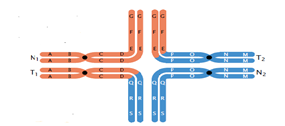TLS Online TPP Program
More Questions
TLS Online TPP Program
#Question id: 20988
#Unit 12. Applied Biology
Degradation of _______ could be optimized and linked to the reduction of Nitrate or Nitrous oxide
TLS Online TPP Program
#Question id: 20989
#Unit 12. Applied Biology
_______ conversion of toluene to benzoic acid in the zone of a crude oil-contaminated aquifer was obtained.
TLS Online TPP Program
#Question id: 20990
#Unit 12. Applied Biology
Anaerobic conversion of toluene to which compound occurs in the anaerobic zone of a crude oil-contaminated aquifer.
TLS Online TPP Program
#Question id: 20991
#Unit 12. Applied Biology
The first isolate with anaerobic toluene degradation activity was the iron-reducing bacterium is
TLS Online TPP Program
#Question id: 20992
#Unit 12. Applied Biology
Geobacter metallireducens is the first iron-reducing bacterium isolate with anaerobic activity and capable of
TLS Online TPP Program
#Question id: 20995
#Unit 12. Applied Biology
Substituent group addition to toluene was not a single attack by succinyl-coa, but two separate reactions involving two molecules of acetyl-coa to give rise to the

